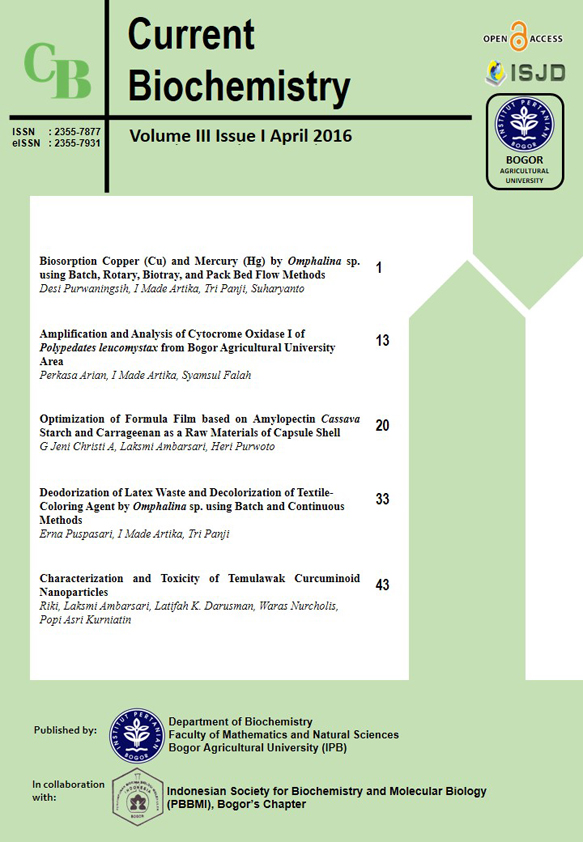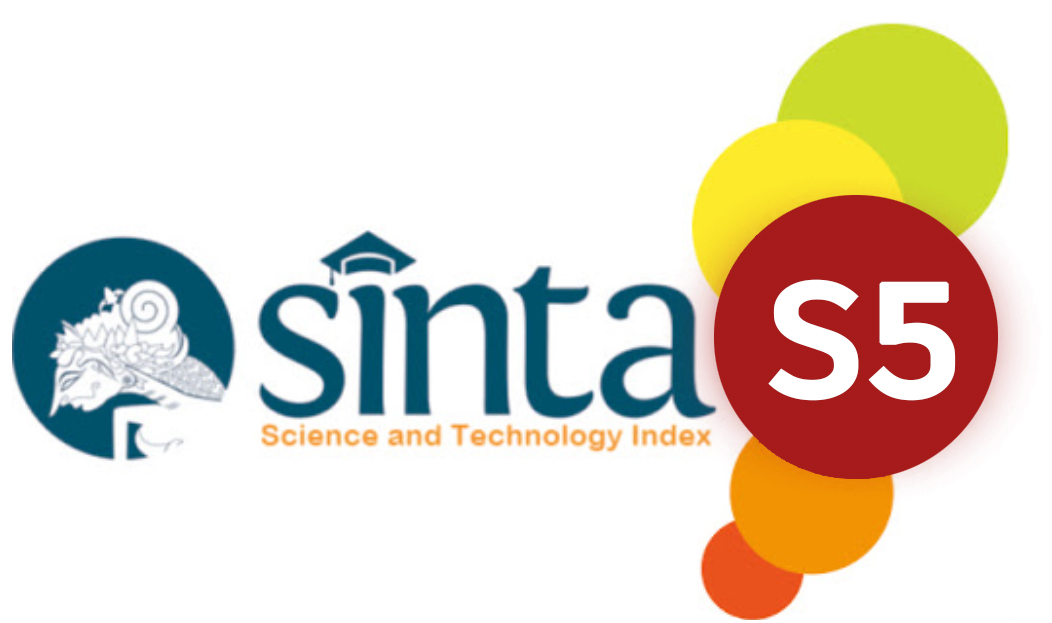Amplification and Analysis of Cytocrome Oxidase I of <i>Polypedates leucomystax</i> from Bogor Agricultural University Area
Abstract
DNA barcoding has become a useful tool for identifying and confirming of species within a known taxonomic framework. A large-scale effort is underway to barcode all amphibian species using the universally sequenced DNA region, a partial fragment of mitochondrial cytochrome oxidase subunit I (COI). This study was aimed to use DNA barcoding technique to identify and confirm species of Polypedates leucomystax and to analyze their phylogenetic relationship. Samples of Polypedates leucomystax were collected from Campus Area of Bogor Agricultural University. The cytochrome oxidase I gene of 600-700 nucleotides were amplified and observed in agarose gel electrophoresis. Forward sequence (604 base pairs) of COI gene was used for phylogenetic analyses. BLAST analysis against BOLD System database showed 95.75% identity with sequences of Polypedates leucomystax. The pairwise genetic distances of Polypedates leucomystax with Rhacophorus schlegelii, Limnonectes fujianensis, Fejervarya cancrivora, and Bufo melanostictus were 0.274, 0.352, 0.339, 0.339, 0.393, respectively. These results illustrated that the genetic identification is congruence with the morphological identification. Phylogenetic tree analysis showed that the samples were in one clade with other tree frogs. The DNA barcoding technique based on the sequence of COI gene can therefore be used to identify and confirm species of Polypedates leucomystax.
References
Bajpai N and Tewari RR. 2010. Mitochondrial DNA sequence-based phylogenetic relationship among flesh flies of the genus Sarcophaga (Sarcophagidae: Diptera). J Gen 89: 51–54. DOI: 10.1007/s12041-010-0010-5
Che J, Chen HM, Yang JX, Jin JQ, Jiang K,Yuan ZY, Murphy RW, dan Zhang YP. 2012. Universal COI primers for DNA barcoding amphibians Mol Ecol Res 12: 247-258. DOI: 10.1111/j.1755-0998.2011.03090.x
Dang NX, Sun FH, Lv YY, Zhao BH, Wang JC, Murphy RW, Wang WZ, and Li JT. 2015. DNA barcoding and the identification of tree frogs (Amphibia: Anura: Rhacophoridae). Informa Healthcare, Early Online: 1-11. DOI:10.3109/19401736.2015.1041113
Dian RW, Ibrohim MH, Dwi L. 2013. The observation of frog Species at State University of Malang as a preliminary effort on frog conservation. J Trop Life Sci. 3: 43 – 47.
Hall BG. 2013. Building phylogenetic tree from molecular data with MEGA. Mol Bio Evol 30: 1229-1235
Irawan F. 2008. Preferensi Habitat Berbiak Katak Pohon Bergaris (Polypedates leucomystax gravenhorst 1829) di Kampus IPB Dramaga Bogor. [Skripsi]. Bogor: Institut Pertanian Bogor.
Kusrini MD. 2013. Panduan Bergambar Indentifikasi Amfibi Jawa Barat. Bogor: Pustaka Media Konservasi.
Marosi B, Sós T, Ghira IV, Damert A and Popescu O. 2010. Identification of COI partial sequences in two closely related frog species, Rana dalmatina and Rana temporaria. Herpetologica Romanica 4: 1-6.
McFadden CS, Benayahu Y, Pante E, Thoma JN, Nevarez PA dan France SC. 2010. Limitations of mitochondrial gene barcoding in Octocorallia. Mol Ecol Resourm 11: 19-31. DOI: 10.1111/j.1755-0998.2010.02875.x
Park DS, Suh SJ, Oh HW dan Hebert PDN. 2010. Recovery of the mitochondrial COI barcode region in diverse Hexapoda through tRNA-based primers. BMC Genomics 11:423. DOI: 10.1186/1471-2164-11-423
Shen Y-Y, Chen X, Murphy RW. 2013. Assessing DNA Barcoding as a Tool for Species Identification and Data Quality Control. PLoS ONE 8(2): e57125. doi:10.1371/journal.pone.0057125
Smith MA, Poyarkov-JR NA, Hebert PDN. 2008. CO1 DNA barcoding amphibian: take the chance, meet the challange. Mol Ecol Resour 8:235-246
Tamura K, Peterson D, Peterson N, Stecher G, Nei M, Kumar S. 2011. MEGA5: molecular evolutionary genetics analysis using maximum likelihood, evolutionary distance, and maximum parsimony methods. Mol Biol Evol 28: 2731-2739













